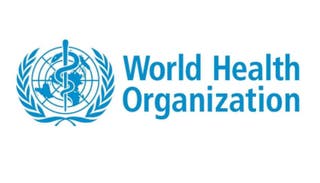Health
1.8bn Adults Risk Heart Attacks, Diabetes — WHO

About 1.8 billion adults are prone to heart attacks and diabetes as a result of not meeting the recommended physical activity levels in 2022, according to a new study by the World Health Organisation (WHO).
The study published in The Lancet Global Health journal, was able to establish the prevalence of insufficient physical activity for 197 countries and territories, from 2000 to 2022.
It pointed to a worrying trend of physical inactivity among adults, which has increased by about five per cent between 2010 and 2022.
The researchers warn that if the trend continues, levels of inactivity are projected to further rise to 35 per cent by 2030, and the world is currently off track from meeting the global target to reduce physical inactivity by 2030.
WHO recommends that adults have 150 minutes of moderate-intensity, or 75 minutes of vigorous-intensity physical activity, or equivalent, per week, as physical inactivity puts adults at greater risk of cardiovascular diseases such as heart attacks and strokes, type 2 diabetes, dementia and cancers such as breast and colon.
“These new findings highlight a lost opportunity to reduce cancer and heart disease and to improve mental well-being through increased physical activity.
“We must renew our commitments to increasing levels of physical activity and prioritize bold action, including strengthened policies and increased funding, to reverse this worrying trend,” said WHO Director-General, Dr Tedros Ghebreyesus.
The highest rates of physical inactivity were observed in the high-income Asia Pacific region (48 per cent) and South Asia (45 per cent), with levels of inactivity in other regions ranging from 28 per cent in high-income Western countries to 14 per cent in Oceania.
The data showed physical inactivity is still more common among women globally compared with men, with inactivity rates of 34 per cent compared to 29 per cent.
In some countries, this difference is as much as 20 per cent. Additionally, people over 60 are less active than other adults, underscoring the importance of promoting physical activity for older adults.
“Physical inactivity is a silent threat to global health, contributing significantly to the burden of chronic diseases. We need to find innovative ways to motivate people to be more active, considering factors like age, environment, and cultural background.
“By making physical activity accessible, affordable, and enjoyable for all, we can significantly reduce the risk of noncommunicable diseases and create a population that is healthier and more productive,” said Director of Health Promotion at WHO, Dr Rüdiger Krech.
The study showed that almost half of the world’s countries have made some improvements over the past decade, and 22 countries were identified as likely to reach the global target of reducing inactivity by 15 per cent by 2030 if their trend continues at the same pace.
In light of these findings, the global health body is calling on countries to strengthen their policy implementation to promote and enable physical activity through grassroots and community sports and active recreation and transport (walking, cycling, and using public transport), among other measures.
“Promoting physical activity goes beyond promoting individual lifestyle choice – it will require a whole-of-society approach and creating environments that make it easier and safer for everyone to be more active in ways they enjoy to reap the many health benefits of regular physical activity,” said Head of the WHO Unit for Physical Activity, Dr Fiona Bull.
“Collective efforts based on partnerships between government and non-governmental stakeholders and increased investments in innovative approaches will be needed to reach the least active people and to reduce inequalities in access to measures promoting and improving physical activity,” WHO said.
-

 News4 days ago
News4 days agoAfolabi Celebrates 50th Birthday With Humanitarian Outreach
-

 News4 days ago
News4 days agoAyodeji Abdulahi Olaiya (Ayonic): A Beacon Of Hope In Osogbo
-

 News4 days ago
News4 days agoFrom Community To Chamber: Ayodeji Abdulahi Olaiya And the Making Of A Legislative Contender In Osogbo
-

 News4 days ago
News4 days agoOsun: South-West NASC Commissioner, Oluga Urges APC Members To Participate In Ongoing e-Membership Registration














